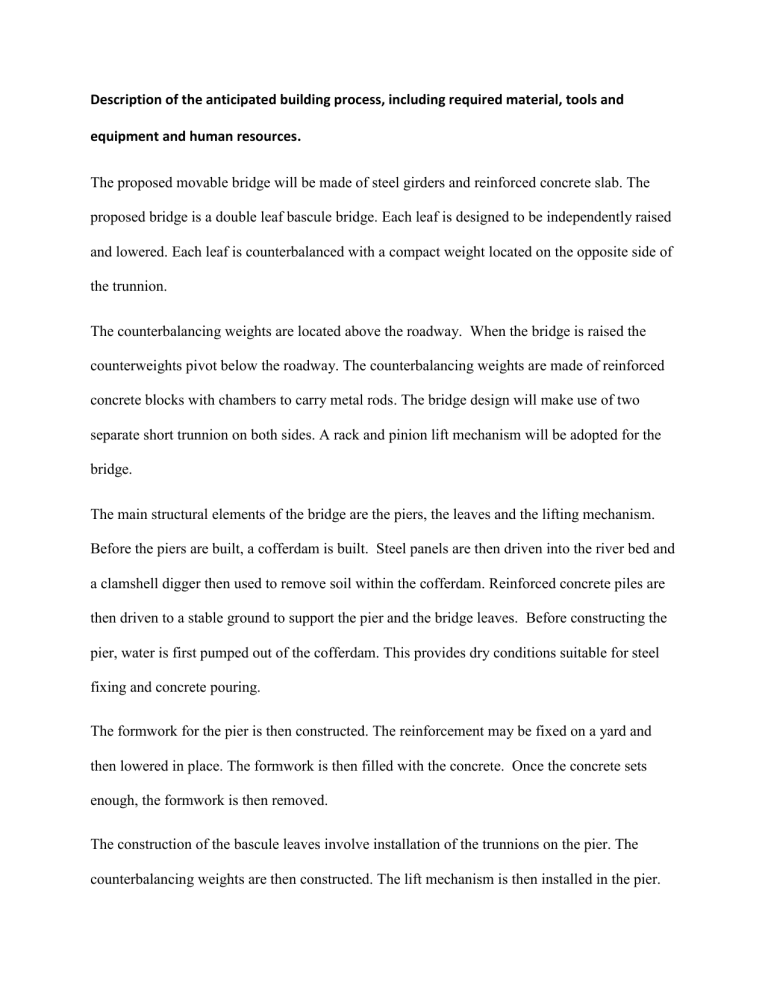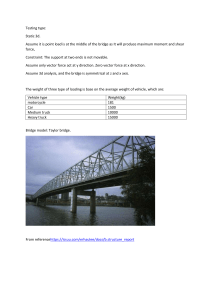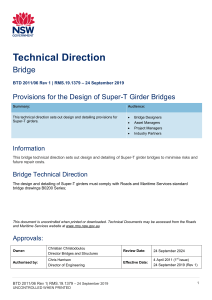
Description of the anticipated building process, including required material, tools and equipment and human resources. The proposed movable bridge will be made of steel girders and reinforced concrete slab. The proposed bridge is a double leaf bascule bridge. Each leaf is designed to be independently raised and lowered. Each leaf is counterbalanced with a compact weight located on the opposite side of the trunnion. The counterbalancing weights are located above the roadway. When the bridge is raised the counterweights pivot below the roadway. The counterbalancing weights are made of reinforced concrete blocks with chambers to carry metal rods. The bridge design will make use of two separate short trunnion on both sides. A rack and pinion lift mechanism will be adopted for the bridge. The main structural elements of the bridge are the piers, the leaves and the lifting mechanism. Before the piers are built, a cofferdam is built. Steel panels are then driven into the river bed and a clamshell digger then used to remove soil within the cofferdam. Reinforced concrete piles are then driven to a stable ground to support the pier and the bridge leaves. Before constructing the pier, water is first pumped out of the cofferdam. This provides dry conditions suitable for steel fixing and concrete pouring. The formwork for the pier is then constructed. The reinforcement may be fixed on a yard and then lowered in place. The formwork is then filled with the concrete. Once the concrete sets enough, the formwork is then removed. The construction of the bascule leaves involve installation of the trunnions on the pier. The counterbalancing weights are then constructed. The lift mechanism is then installed in the pier. The side steel girders are then constructed on each bridge leaf. The girders are fitted with gears that will work together with the lift mechanism. The counterbalancing weights are attached to the heel sections of the leaves. Other longitudinal girders are then added between the side girders. Steel braces are then installed between the longitudinal girders. To maintain stability during the construction of the leaf, it is imperative to add weight to the counterweight systematically. Finally, span locks are installed on the leaf tips to connect the leaves when the bridge is closed so as to avoid bridge vibration when there is traffic. To ensure quality construction, qualified and skilled labour should be employed. The construction of the pier require a contractor with previous work experience in building cofferdams. The bearing capacity of the riverbed layers should be determined by an experienced geotechnical engineer. The piles, piers, steel girders and the counterweights must also be designed by an experienced structural engineer taking into account the expected traffic. References Koglin, T. L. (2003). Movable bridge engineering. John Wiley & Sons. Wengenroth, R. H., Mix, H. A., & Hardesty, E. R. (1975). Fifty-year history of movable bridge construction—Part III. Journal of the Construction Division, 101(3), 545-557. Zhi-xiang, T. I. A. N. (2012). CONSTRUCTION TECHNIQUE FOR HALF-BRACKET CANTILEVER ASSEMBLY OF STEEL BOX BEAM OF MOVABLE BRIDGE IN TIANJIN [J]. Architecture Technology, 4. Gokce, H. B., Catbas, F. N., Gul, M., & Frangopol, D. M. (2013). Structural identification for performance prediction considering uncertainties: case study of a movable bridge. Journal of Structural Engineering, 139(10), 1703-1715. How Draw Bridge is made, retrieved from: http://www.madehow.com/Volume-6/DrawBridge.html#ixzz7FqV0PT3P





